In the week that the UK and France advanced their ambitions to test a jointly-developed unmanned future combat air system, we take a look at the bilateral project, plus nine other notable examples of Anglo-French collaboration in the aerospace sector.
1: Aérospatiale-BAC Concorde
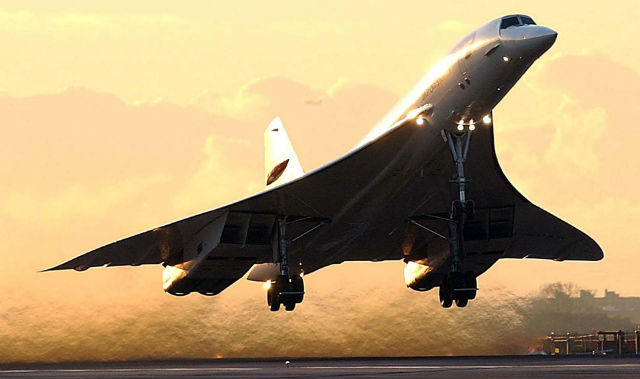
Rex Features
Positioned among a select handful of the most iconic aircraft ever flown, the Aérospatiale-BAC Concorde remains the only supersonic airliner to have entered revenue service. The result of a bilateral project agreed in 1962 to develop a supersonic transport, Concorde was rolled out in December 1967 and first flown in 1969. With its sleek lines and high-speed performance, the aircraft evoked the glamour of early long-distance travel, but failed to attract volume orders – in no small part due to the international oil crisis of the early 1970s. Ultimately, only Air France and British Airways acquired the Rolls-Royce/Snecma Olympus 593-engined design, with just 14 production examples delivered. A fatal crash involving an Air France example in Paris on 25 July 2000 marked the beginning of the end for Concorde, which despite being returned to use in November 2001 after receiving a package of safety enhancements left use in 2003 after 27 years of service.
2: Sepecat Jaguar
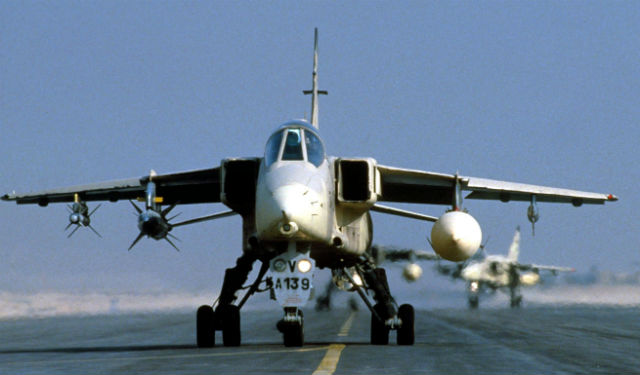
Rex Features
Developed by the industries of France and the UK via the Sepecat consortium, the Jaguar was conceived as a ground-attack asset for the nations’ air forces. It entered use with the services in 1973 and 1974, respectively, serving in conflicts including the 1990-1991 Gulf War, and was also exported to Ecuador, India, Nigeria and Oman. Today, the Rolls-Royce Turbomeca Adour-powered asset remains in use only with the Indian air force, withFlightglobal’s MiliCAS databaserecording its inventory as including 161 examples, including Hindustan Aeronautics-built aircraft.
3: BAE Systems/Dassault FCAS
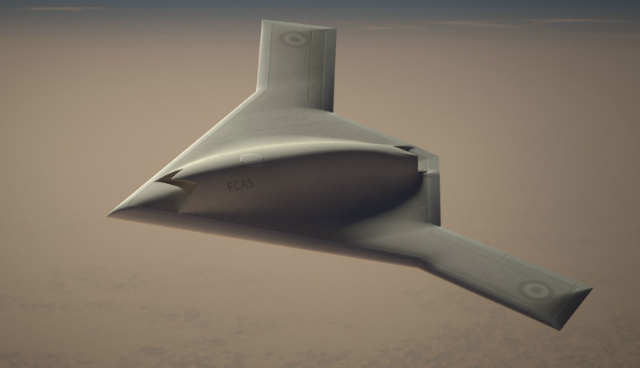
Dassault
Being pursued under a bilateral treaty between the nations, theFuture Combat Air System(FCAS) effort is intended to create an advanced unmanned system for potential use by the French and UK armed forces from the early 2030s. The programme will draw on the experiences of the nations’ respective BAE Systems-led Taranis and Dassault-led Neuron technology demonstrators. Rolls-Royce and Snecma are working on propulsion system technologies linked to the initiative, with Selex ES and Thales to head avionics activities.
4: Airbus
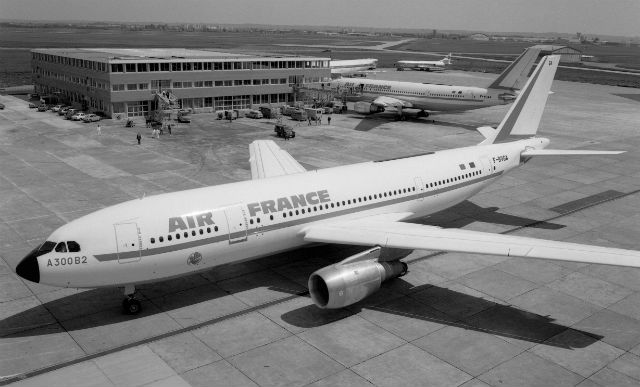
Airbus
The UK was among the founding nations of Airbus Industrie in the mid-1960s, along with France and Germany, with their first product – the A300 – having entered service in 1974. The UK remained a full member of Airbus until BAE Systems sold its stake in the European commercial aircraft champion in 2006, to focus on its defence activities and US expansion. Despite this departure, the wings for every Airbus commercial aircraft flown (bar those A320-family examples assembled in Tianjin, China) continue to be assembled at Airbus UK’s Broughton facility in Wales.
5: Collaborative European fighter study
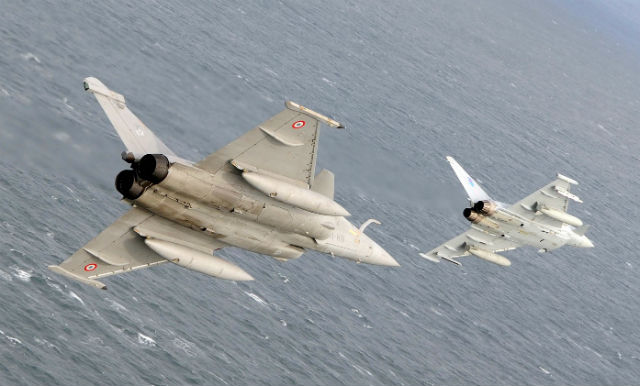
Crown Copyright
Had the multinational Future European Fighter Aircraft programme held firm, France and the UK would now be flying the same frontline strike asset. But, in an example of the old saying “vive la différence”, France exited the initiative in the early 1980s to instead pursue the development of its “omnirole” Dassault Rafale; including an M-model version capable of operating from the deck of an aircraft carrier. The UK, along with Germany, Italy and Spain, went on to field the Eurofighter Typhoon – one of the Rafale’s fiercest rivals on the export market. The French design has been selected in India, although New Delhi has yet to sign a contract, while the Typhoon is now also operated by Austria and Saudi Arabia, and is on order for Oman. An earlier Anglo-French variable geometry combat aircraft project also failed to make it past the early planning stages.
6: Sud Aviation Caravelle
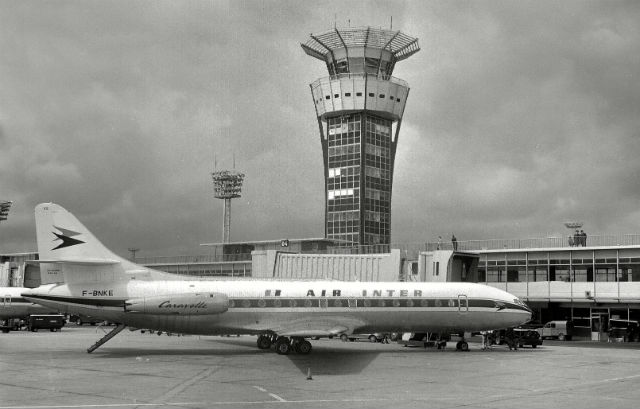
Rex Features
The stunning Sud Aviation SE 210 Caravelle was rolled out in prototype form in 1953 and first flown two years later. The 80-seat airliner was powered by a pair of Rolls-Royce Avon engines, and used the same nose section as the UK’s ill-fated de Havilland Comet. Our Rex Features-sourced picture shows an Air Inter-operated Caravelle III at Paris Orly airport in May 1970.
7: MBDA
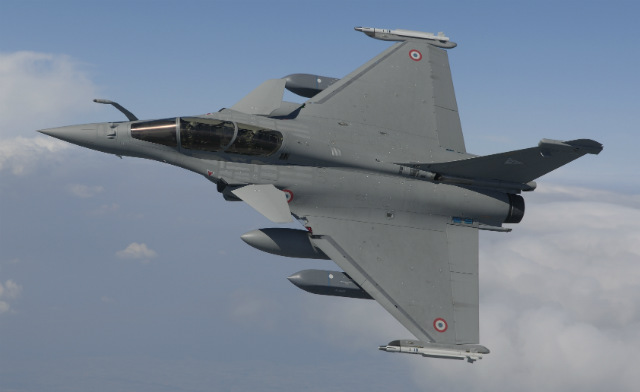
Dassault
France and the UK account for the bulk of European guided weapons specialist MBDA’s activities, with Germany and Italy its other home nations. The company’s air-launched products include the in-service Storm Shadow/SCALP-EG cruise missile and the Meteor beyond-visual-range air-to-air missile, which will enter service with the Eurofighter, Dassault Rafale and Saab Gripen from 2015. In its most recent example of Anglo-French collaboration, MBDA has been contracted to develop the FASGW (Heavy)/ANL anti-ship missile to arm maritime helicopters operated by the nations’ naval air arms.
8: Engines
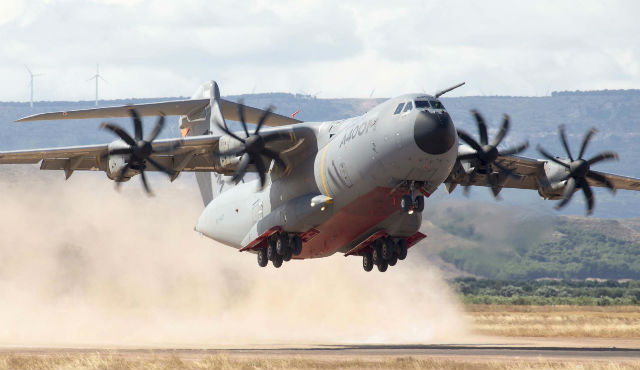
Airbus Defence & Space
A long tradition of collaboration between the French and UK engine industries has previously delivered the Rolls-Royce/Snecma Olympus 593 for Concorde and the R-R/Turbomeca Adour series for the Jaguar and BAE Systems Hawk. Other examples include the RTM322 turboshaft used by helicopters including some AgustaWestland AW101s, with the design now wholly owned by Turbomeca. The newest example of bilateral co-operation is through R-R and Snecma’s participation in the Europrop International consortium, which has provided the TP400-D6 for the Airbus A400M Atlas, along with consortium partners Avio and ITP. The design is the most powerful turboprop engine to have been produced in the West.
9: de Havilland Vampire
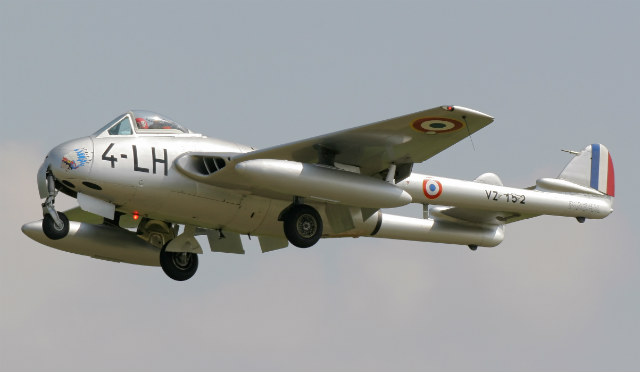
AirTeamImages
The UK’s jet-powered de Havilland Vampire fighter was subsequently license-built for the French air force as the Mistral by Sud Est in Marignane. Design modifications included increasing the Mk 5 variant’s top speed to 500kt (925km/h) and installing a French-designed ejection seat. More than 200 Vampires were eventually manufactured for the French service.
10: Dassault Mystère-Delta
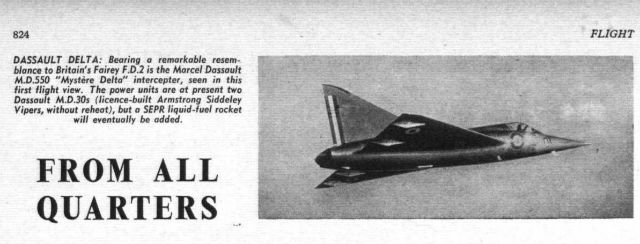
Marcel Dassault’s first Mirage, the delta-winged Mystère-Delta MD 550, was initially powered by a pair of licence-built Armstrong Siddeley Viper MD30R turbojets, and asFlight Internationalreported on its first flight in 1955, bore “a remarkable resemblance to Britain’s Fairey FD2”. Although the model did not enter production, Dassault’s subsequent Mirage-series fighters, starting with the III, enjoyed major success with the French armed forces and multiple export users around the world.
Source: FlightGlobal.com























